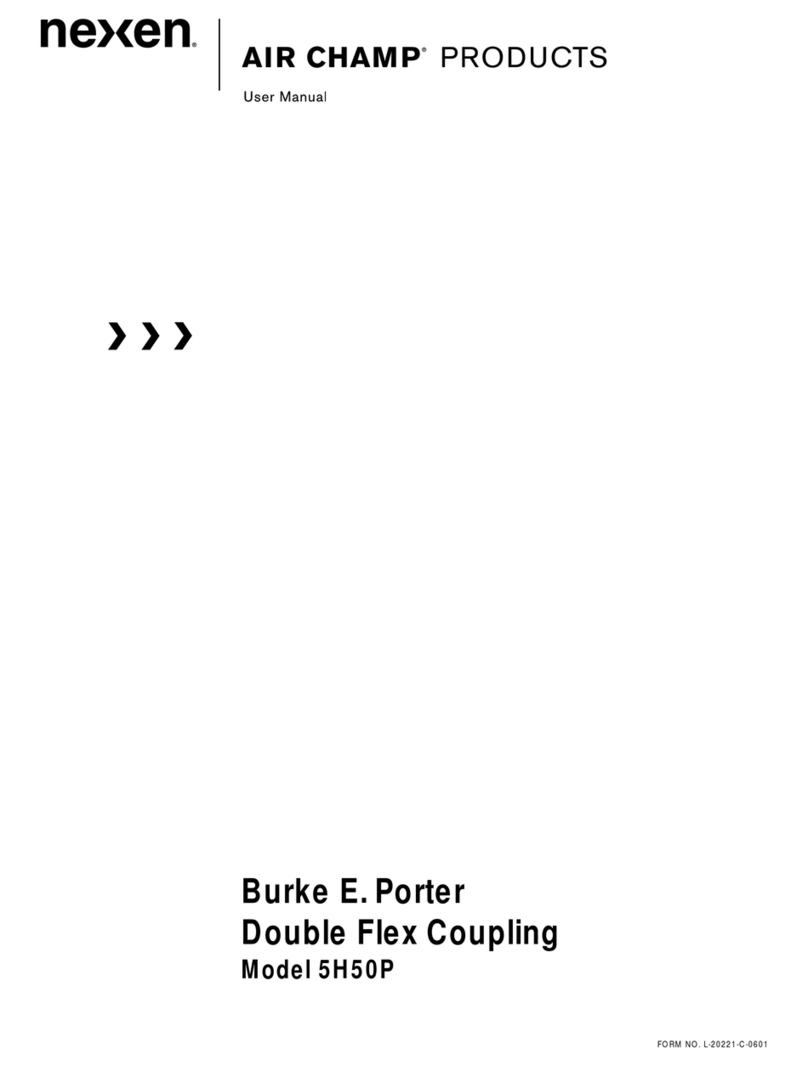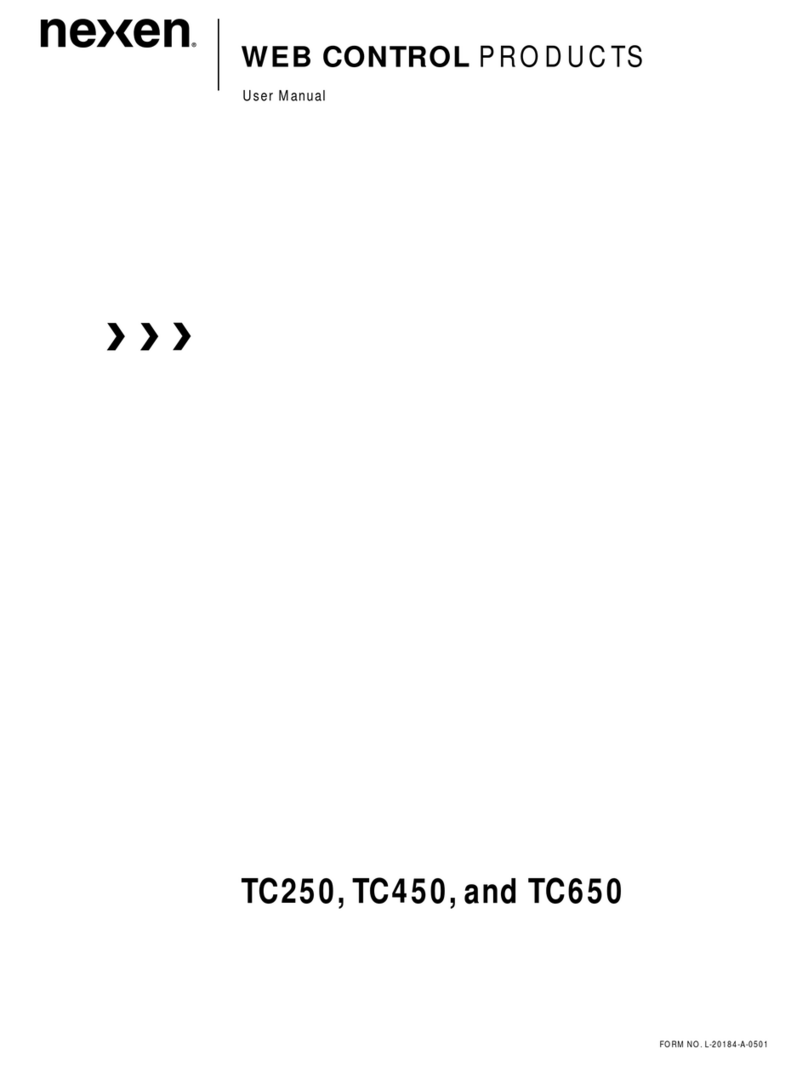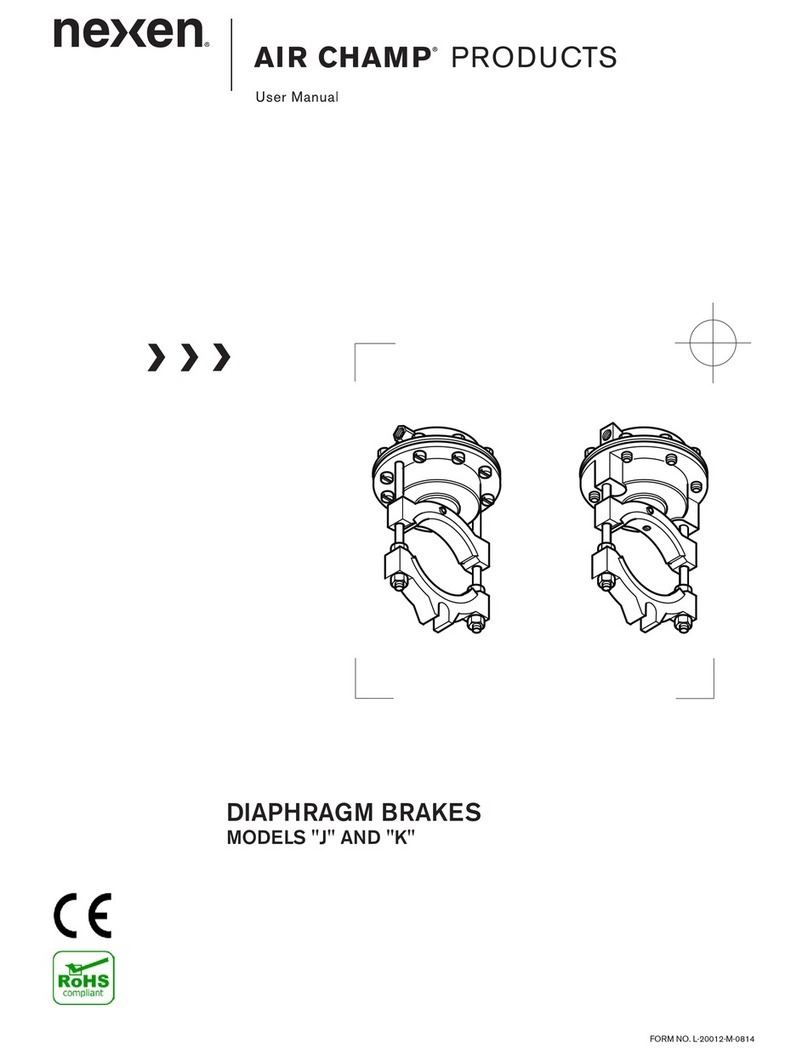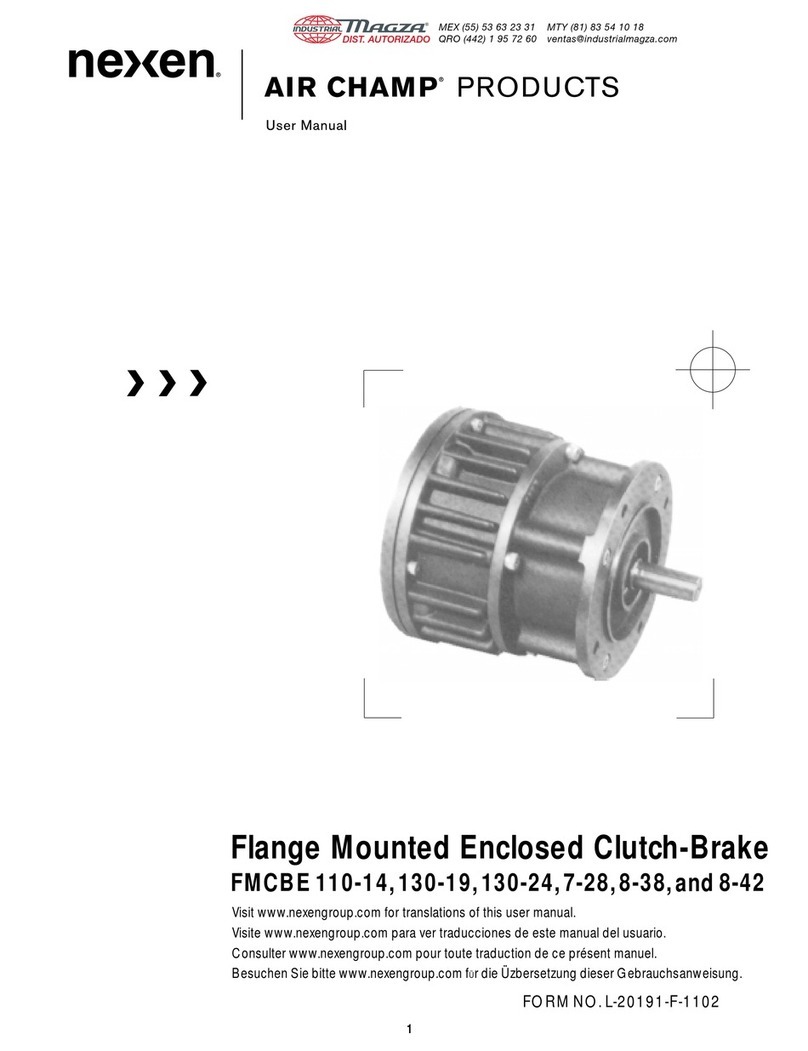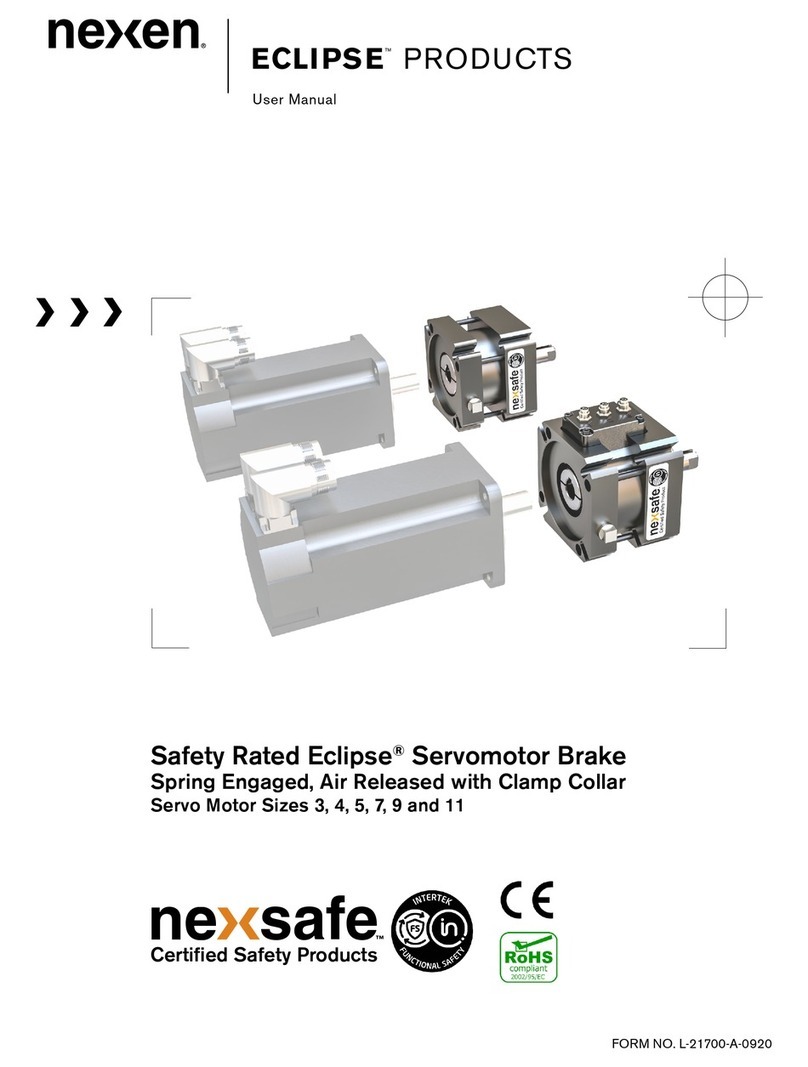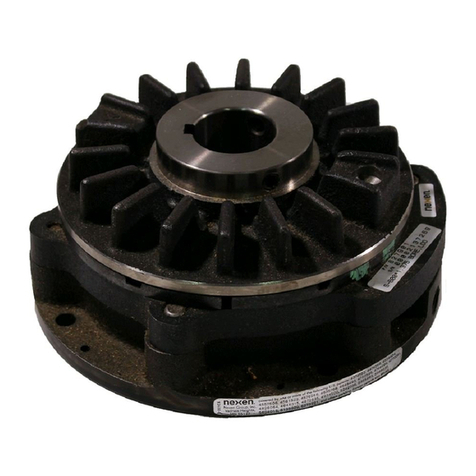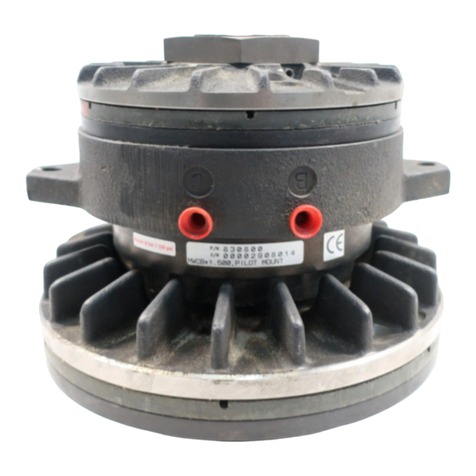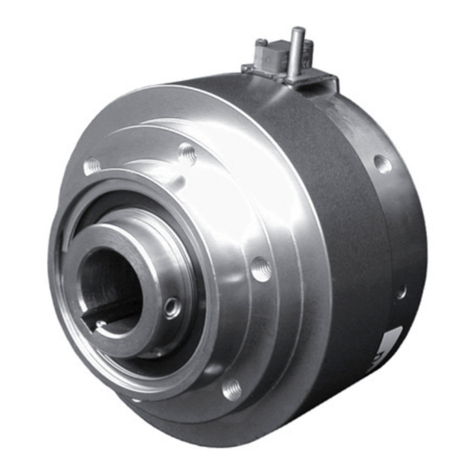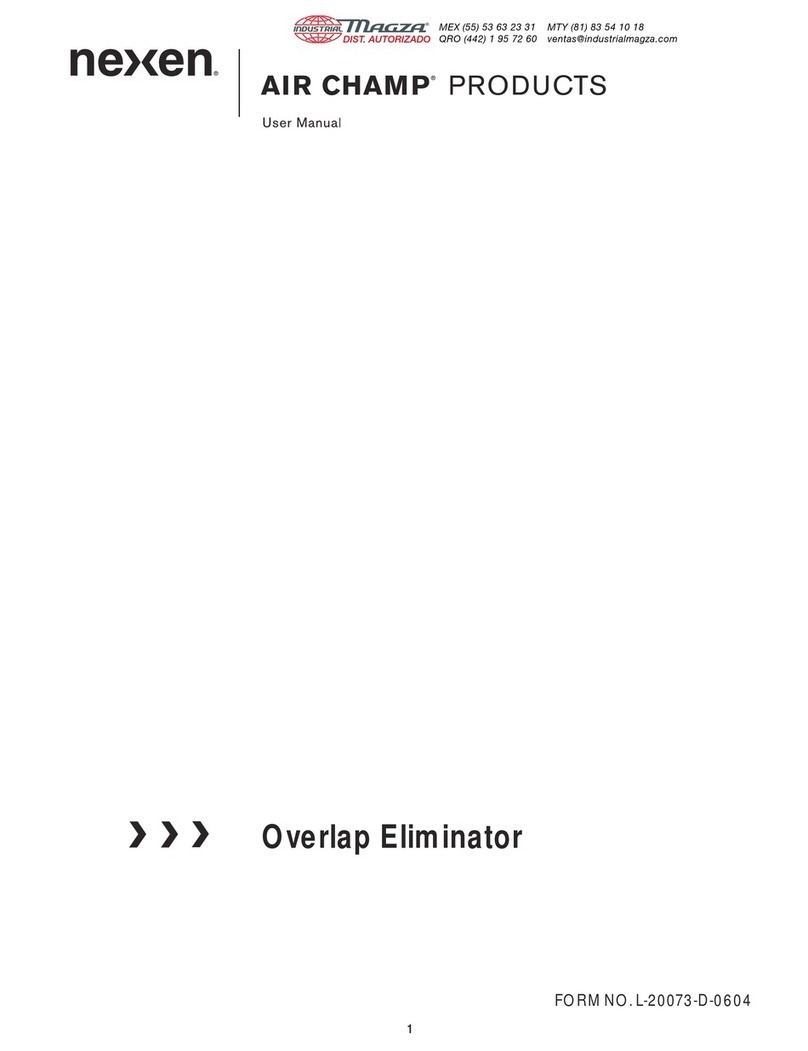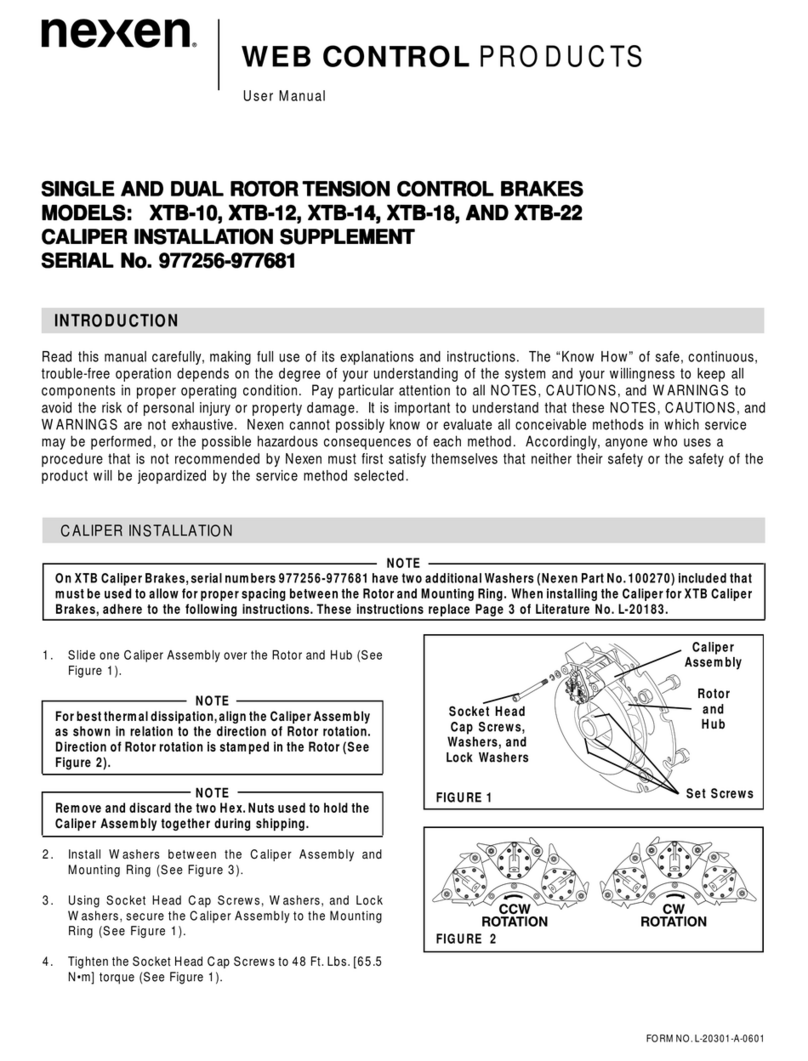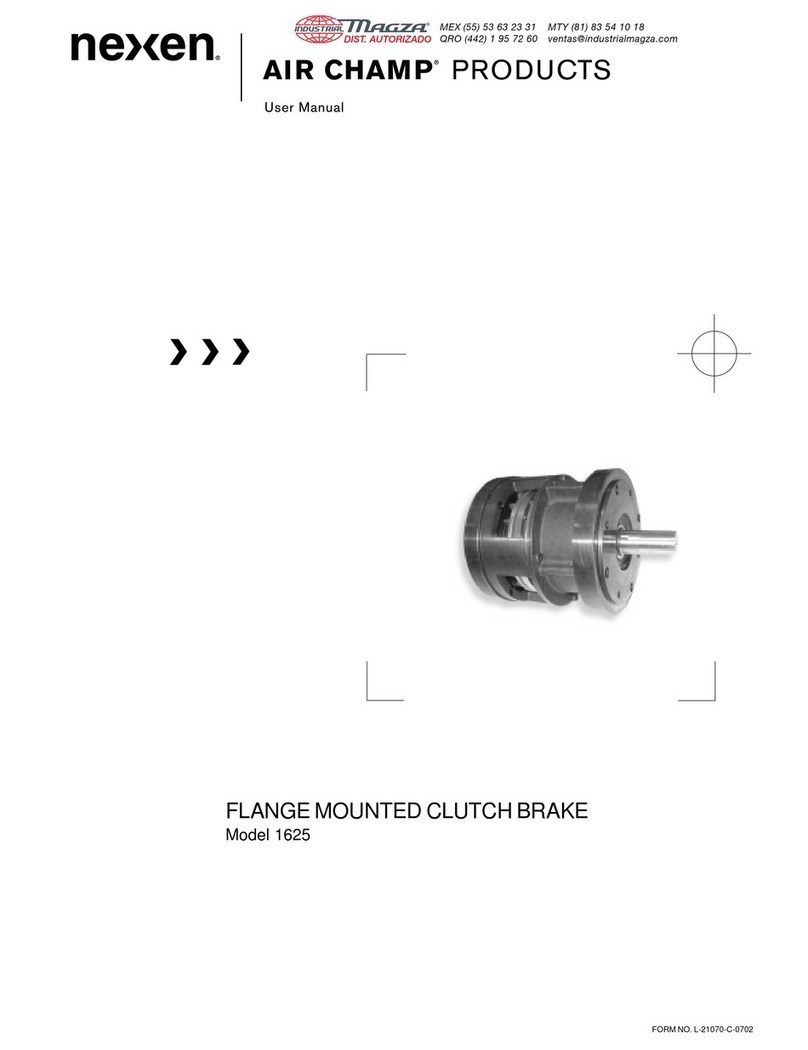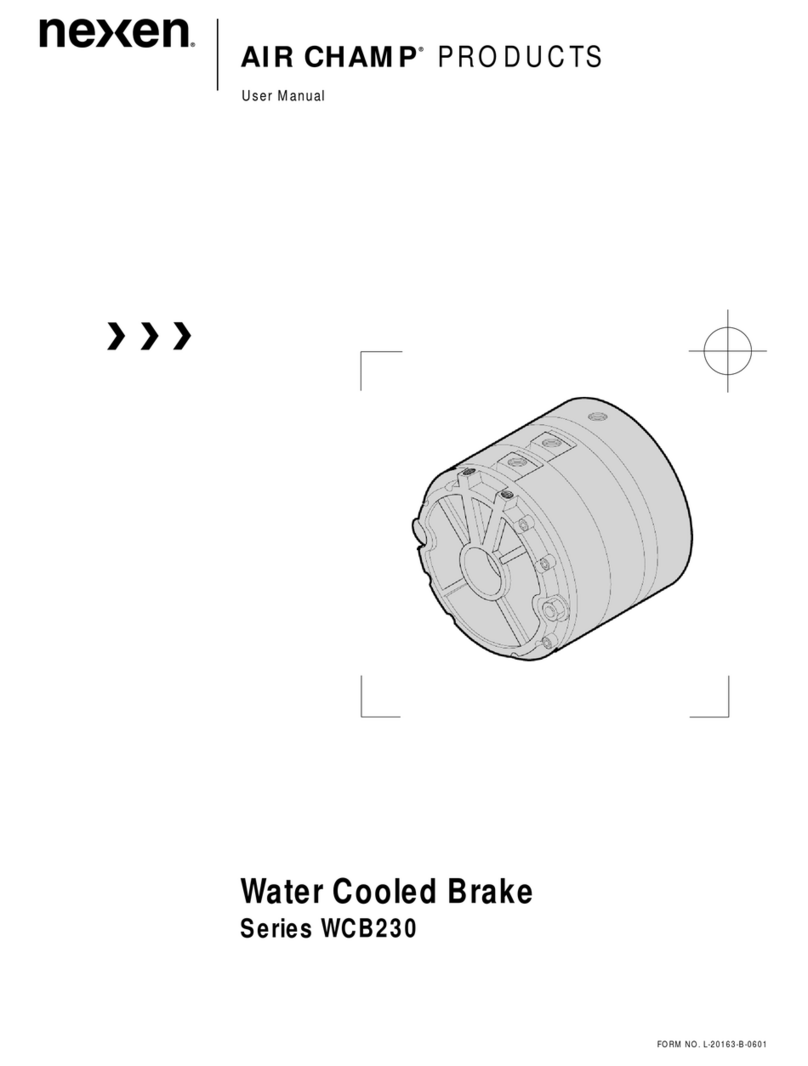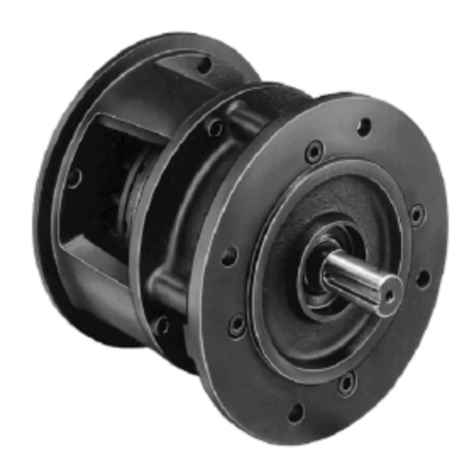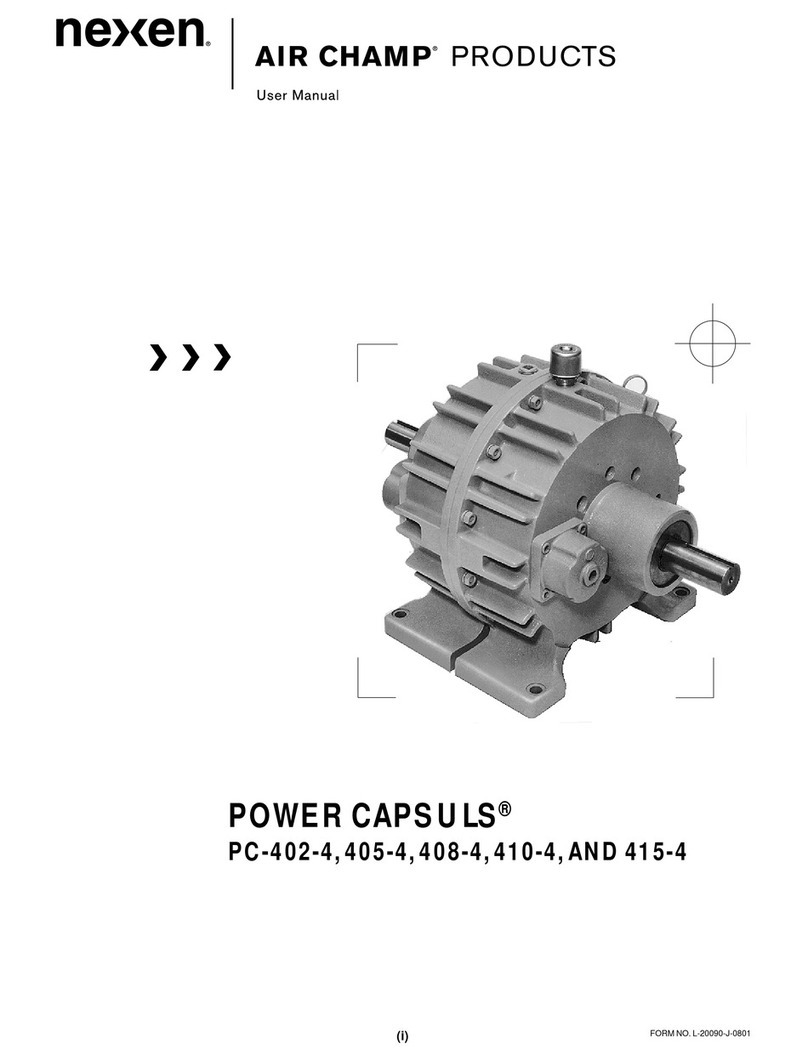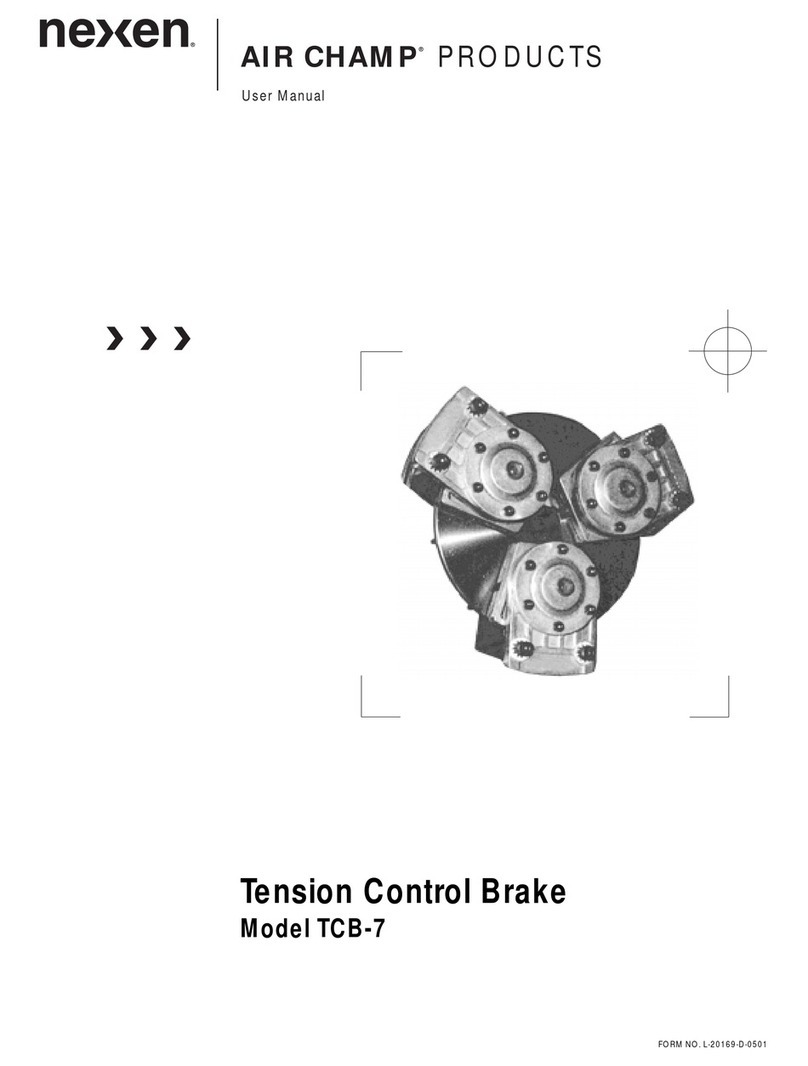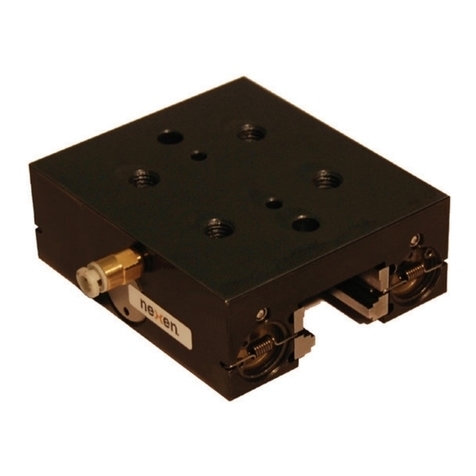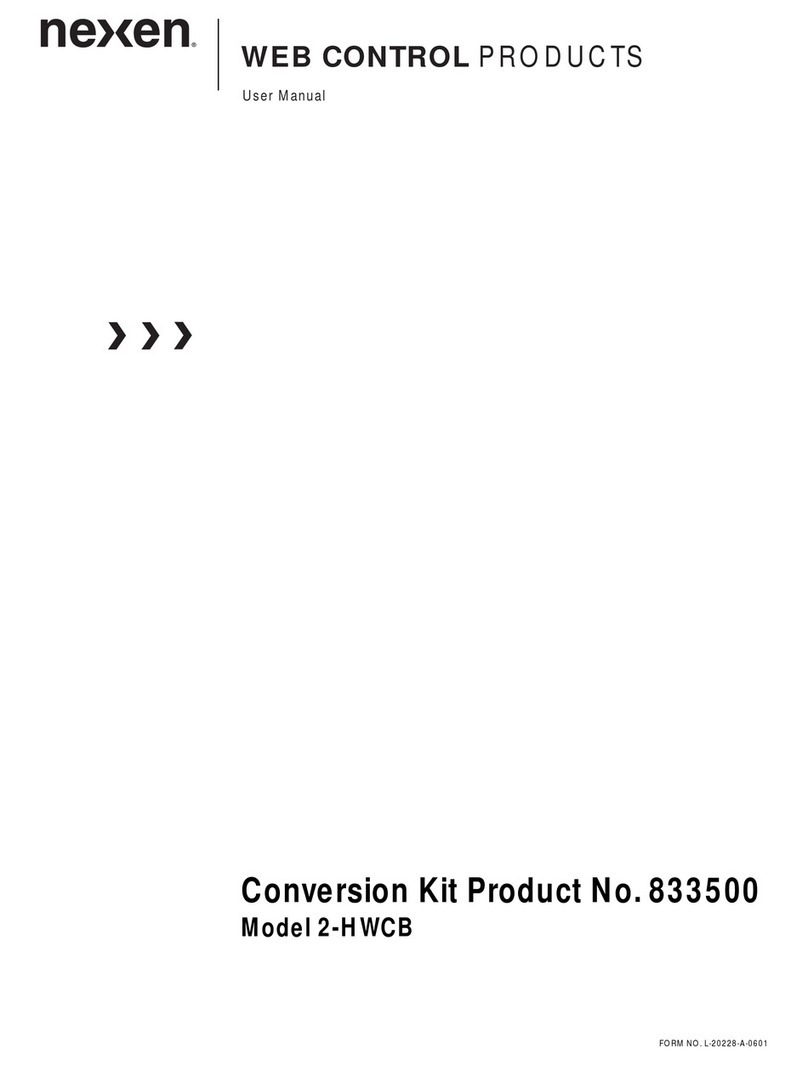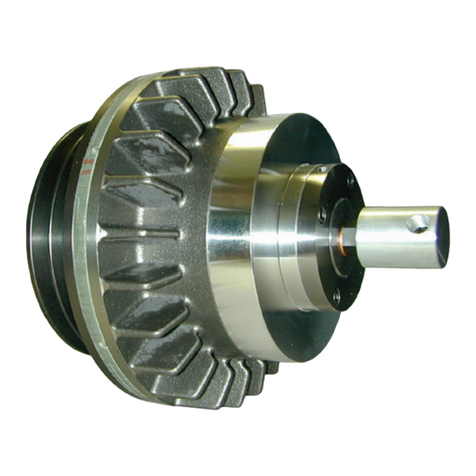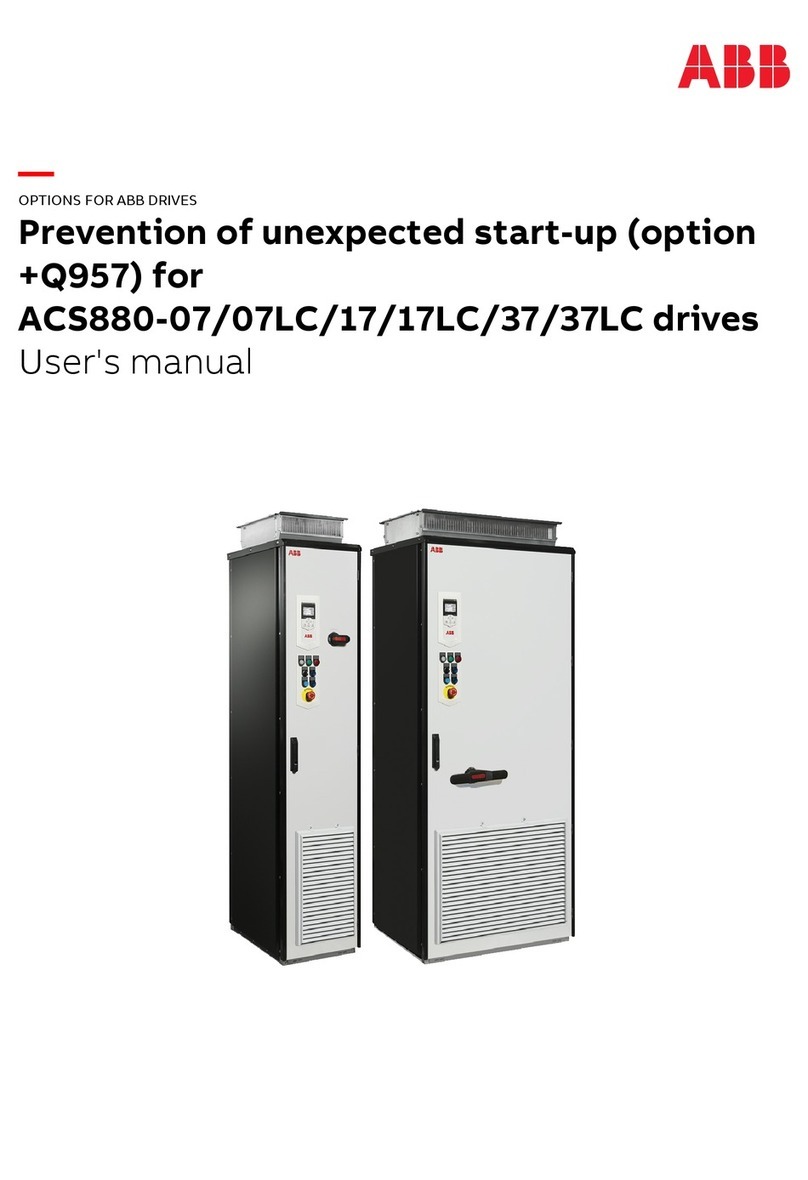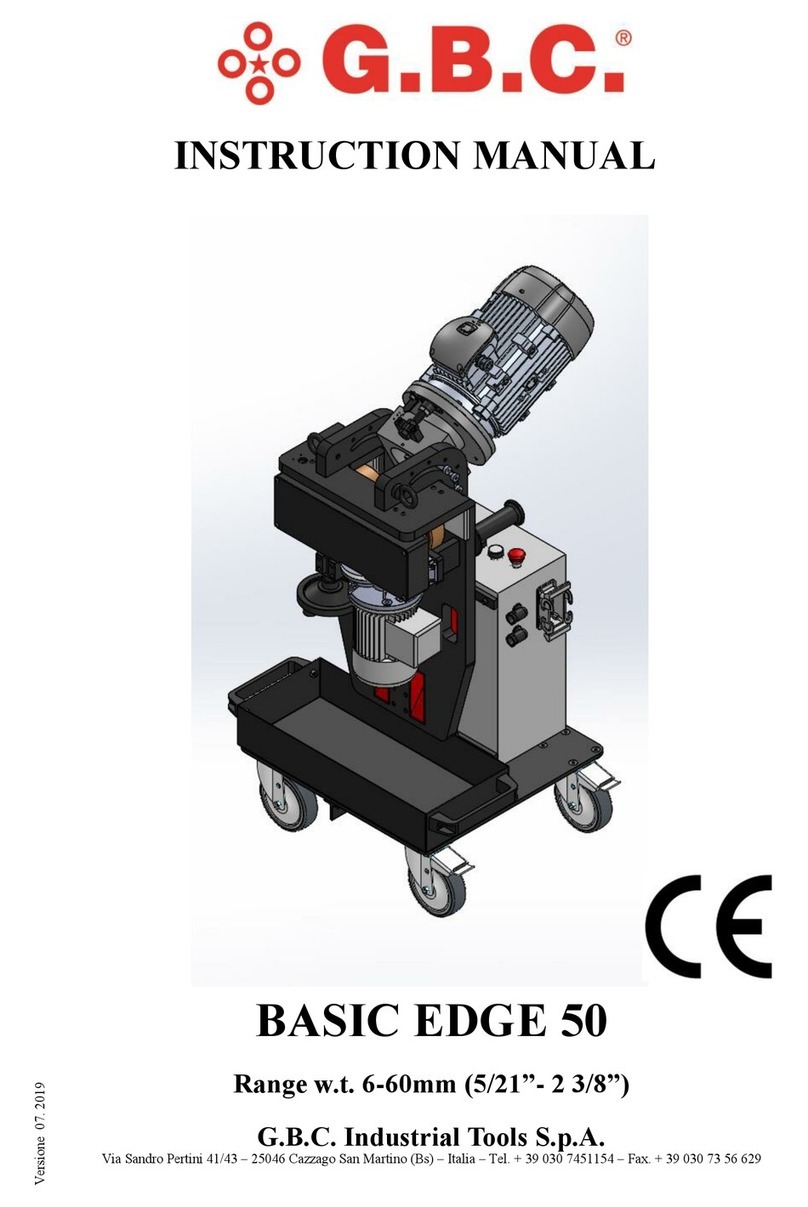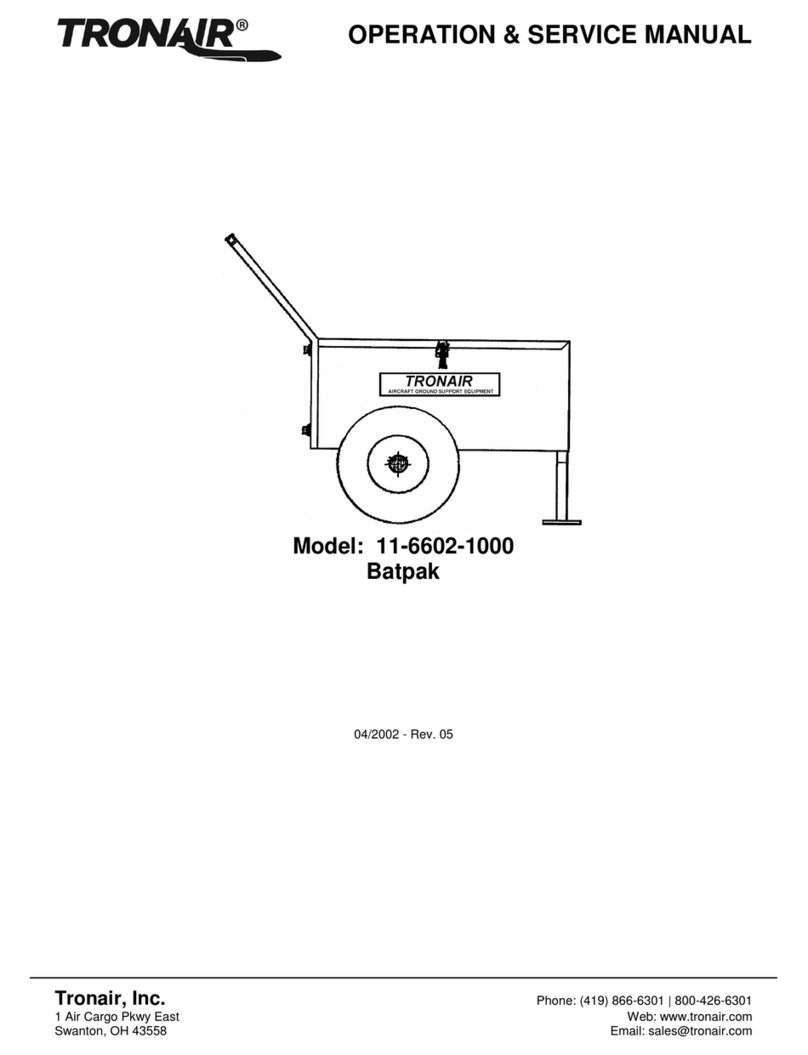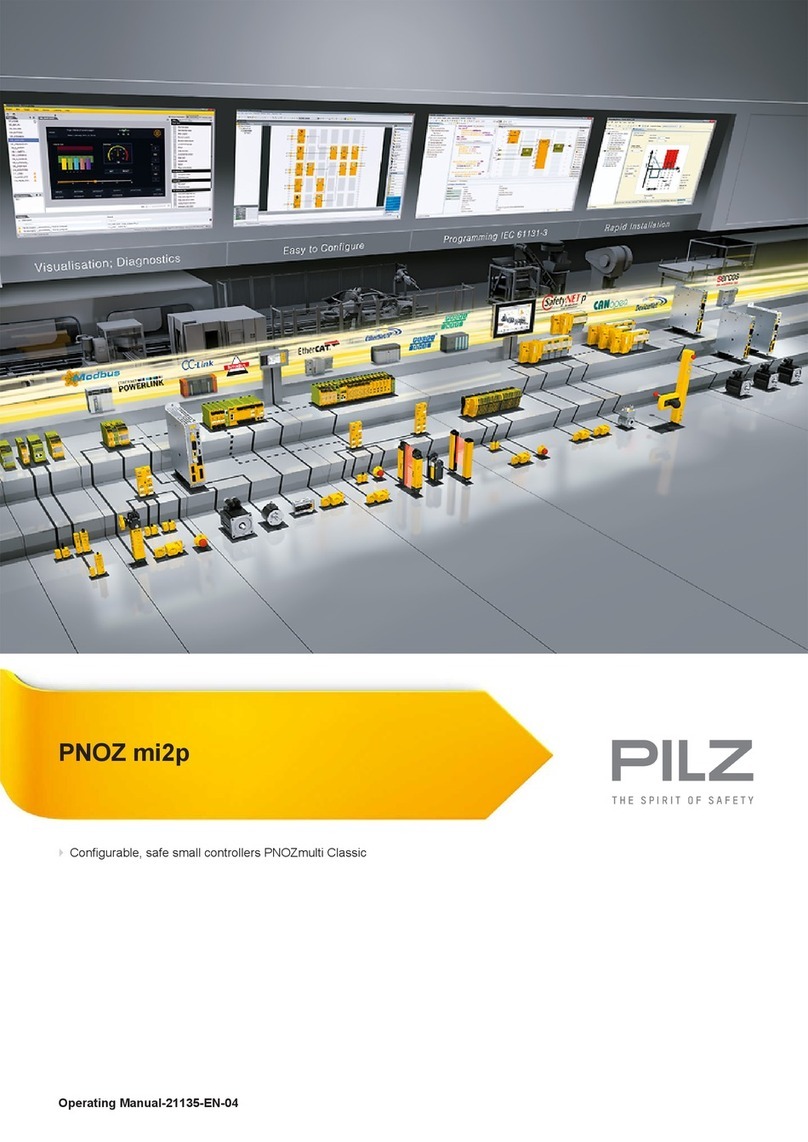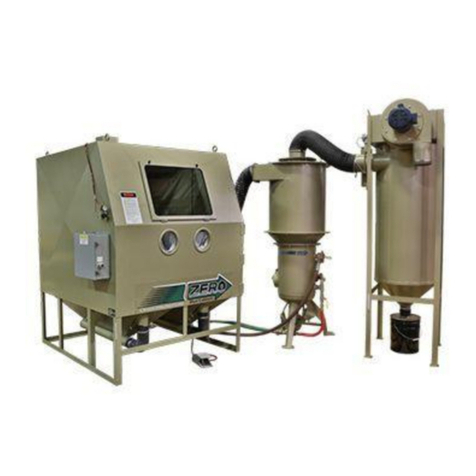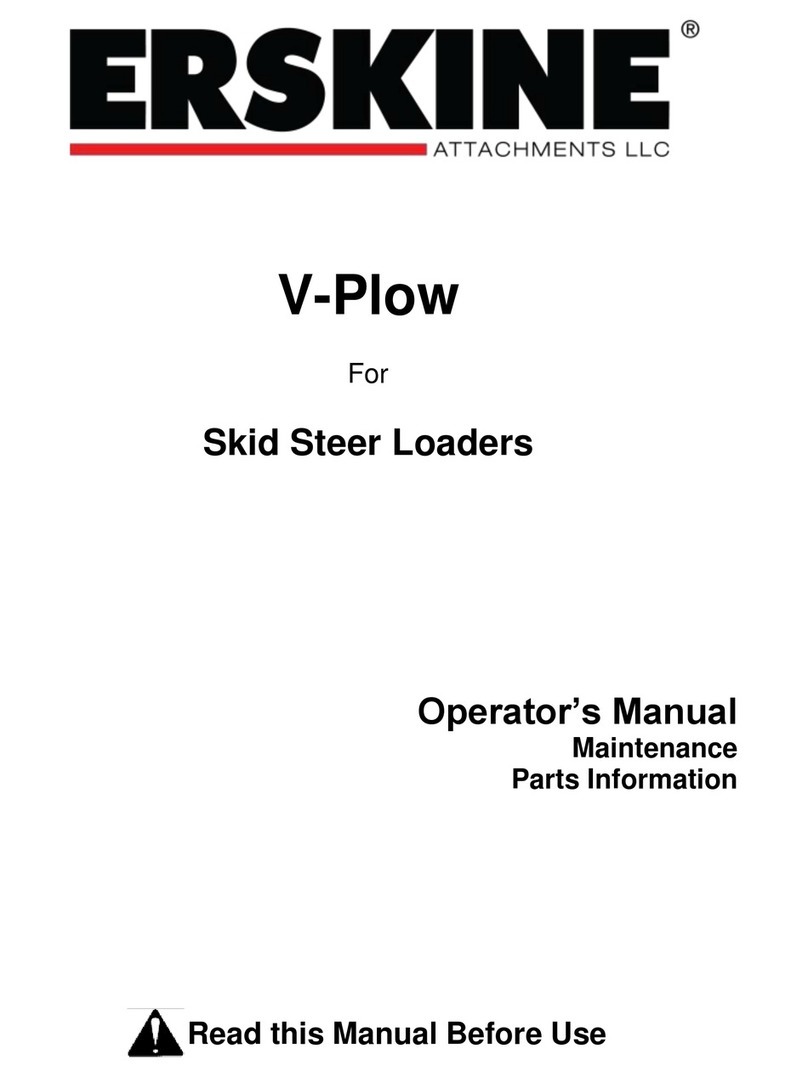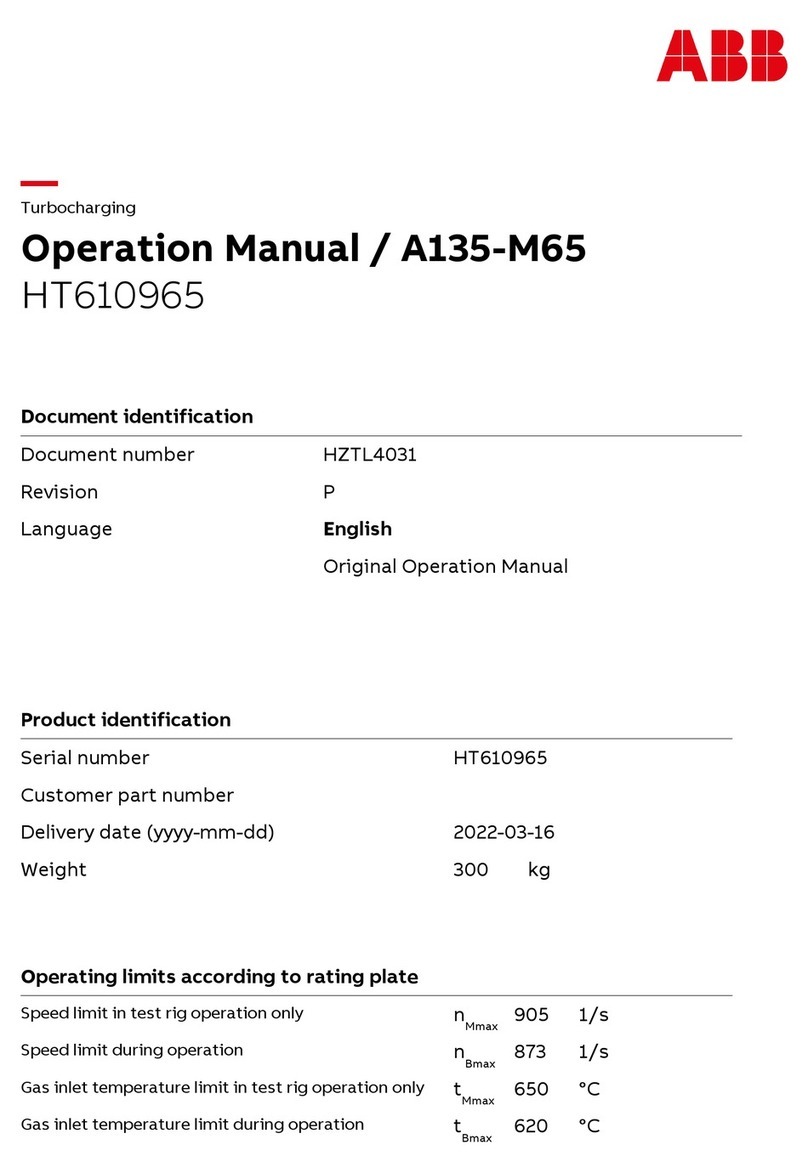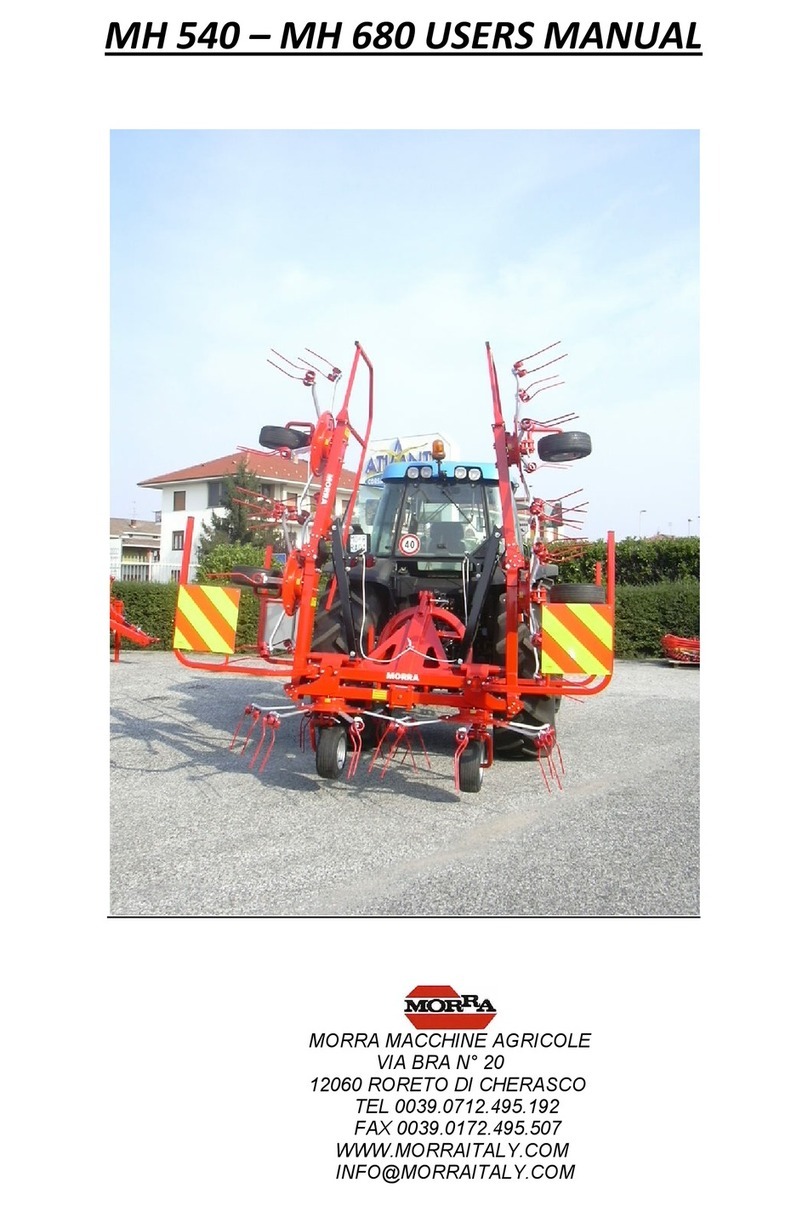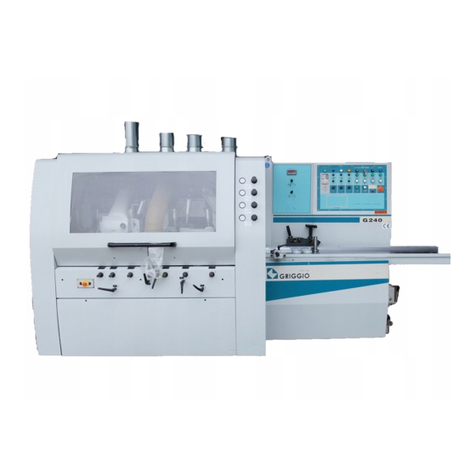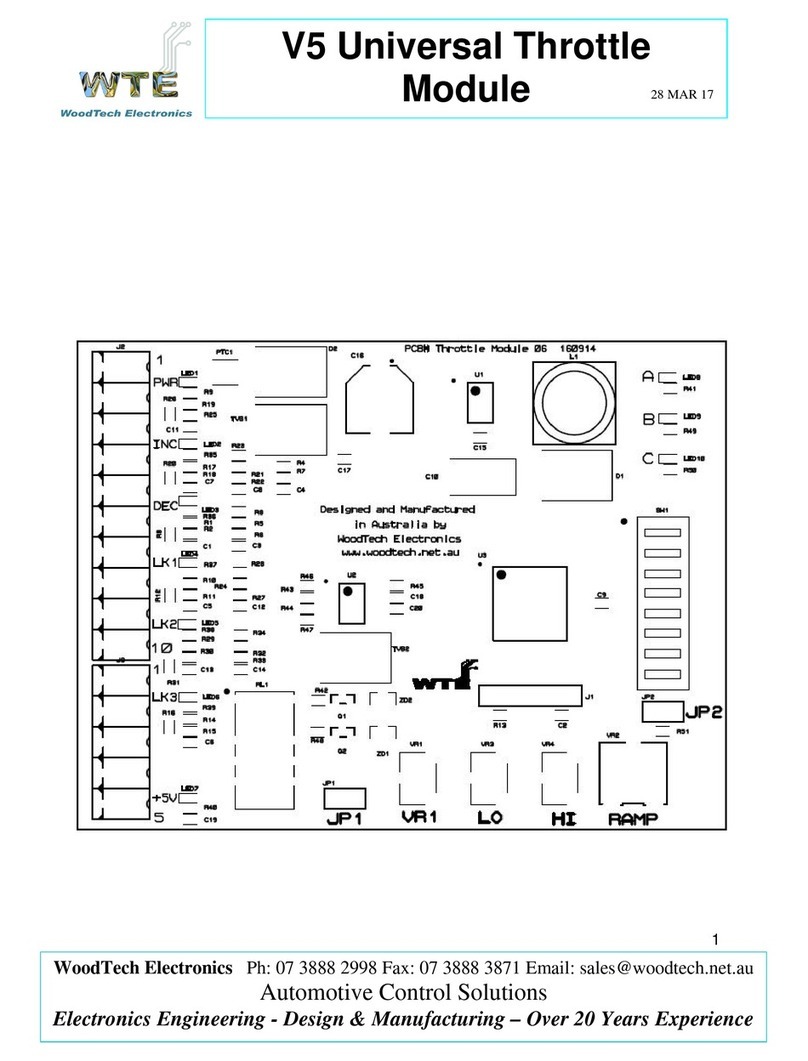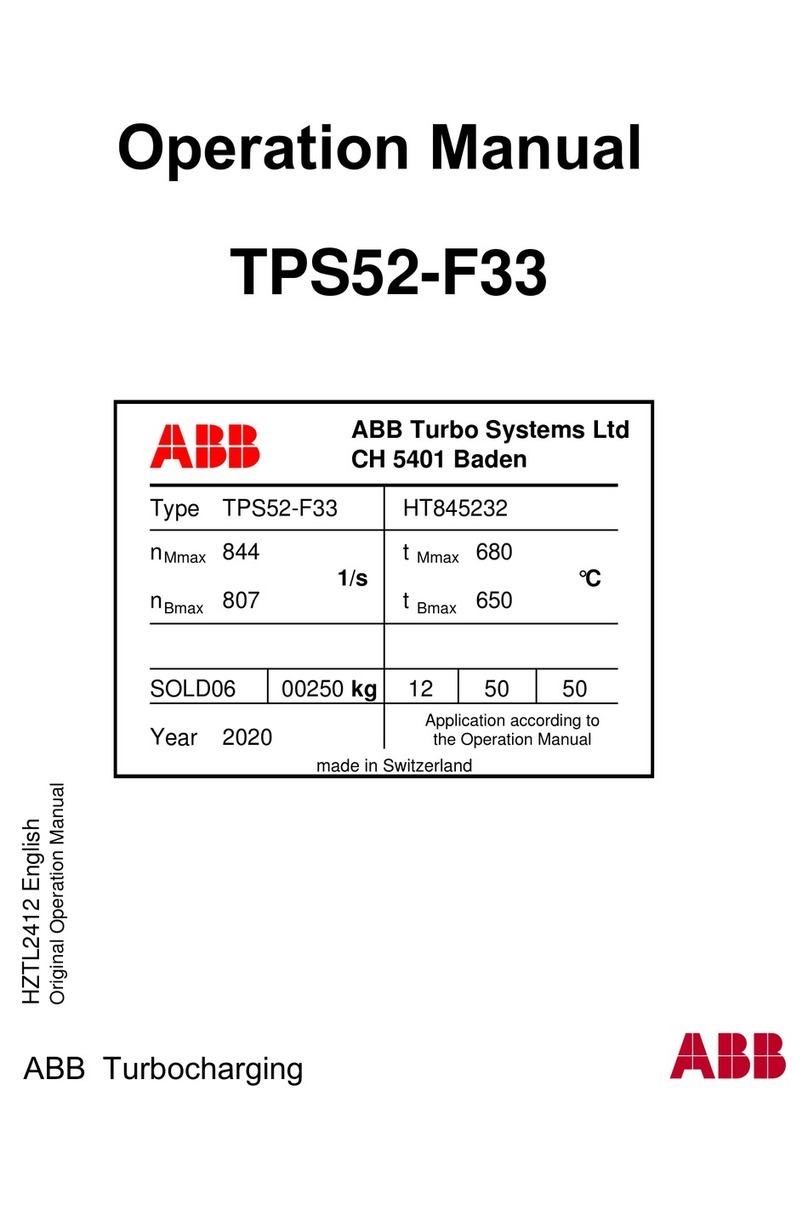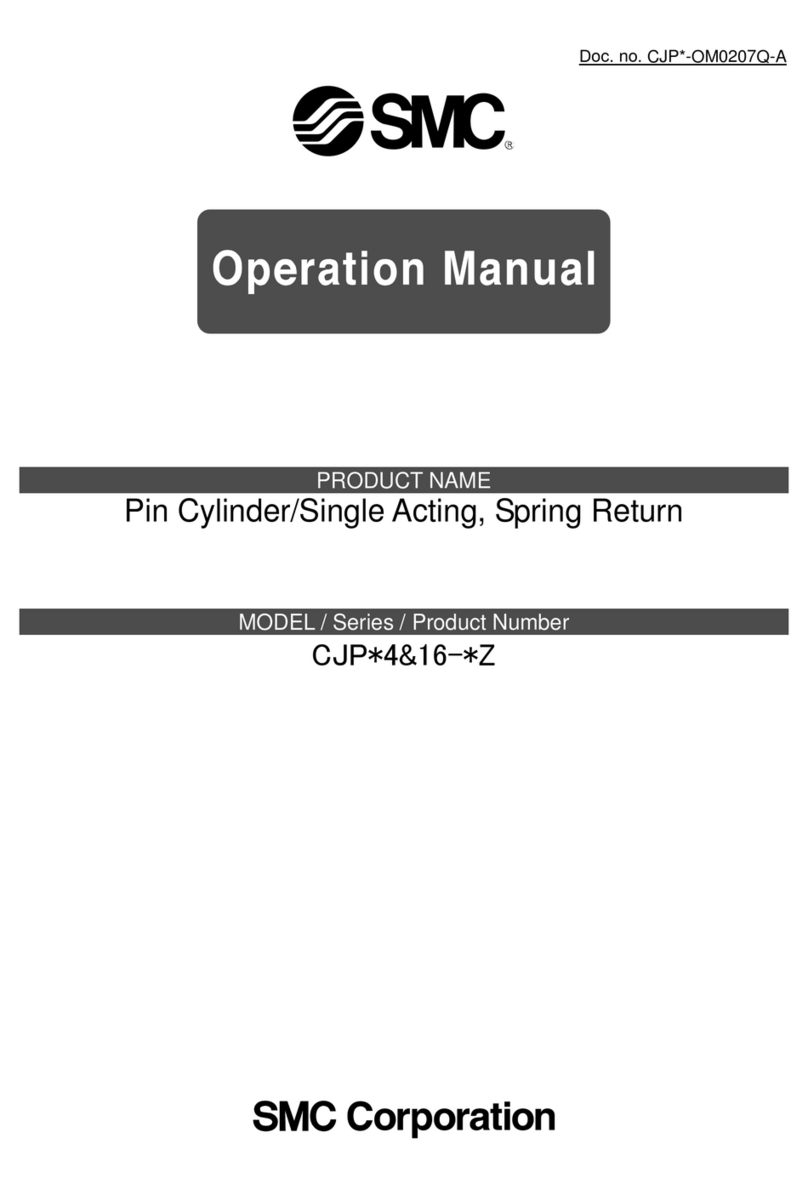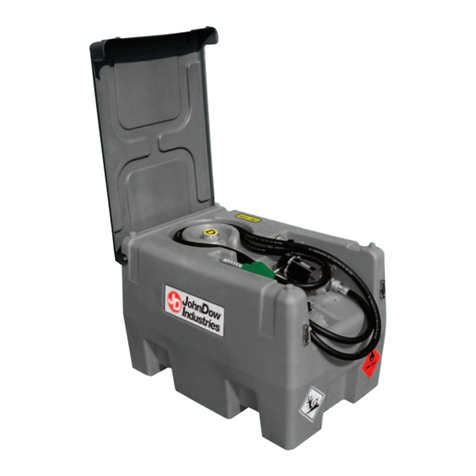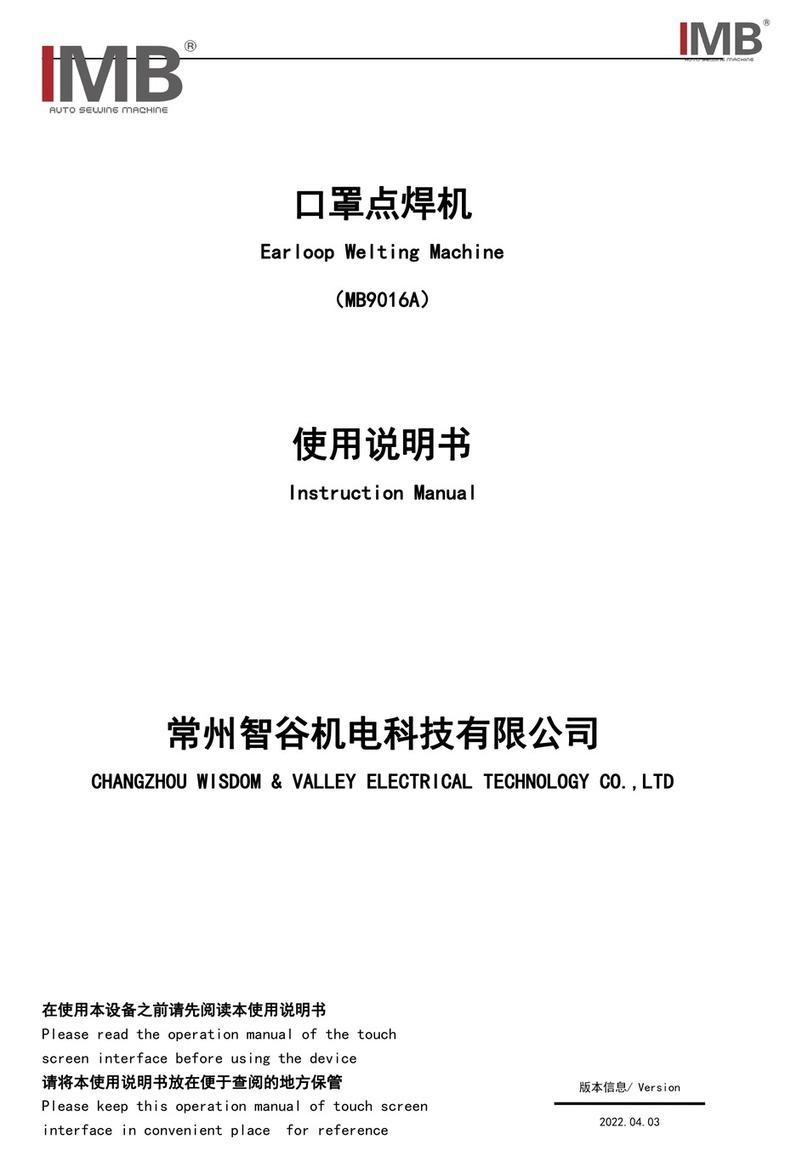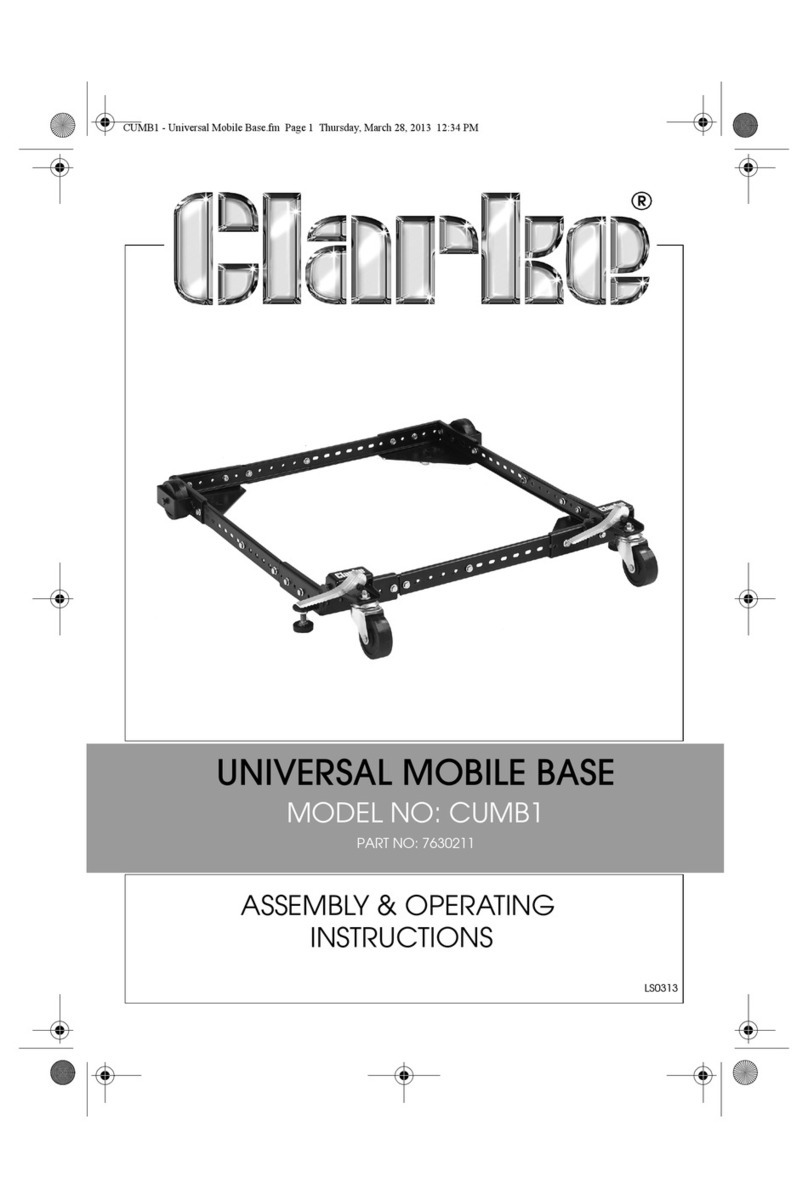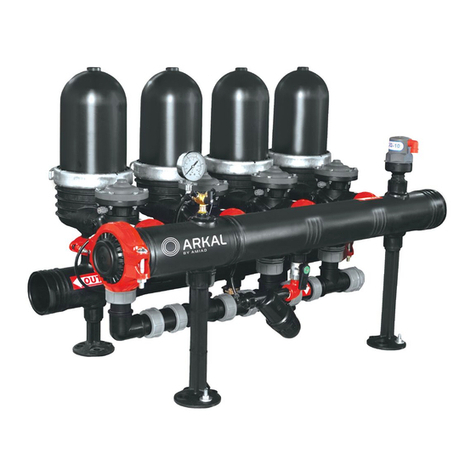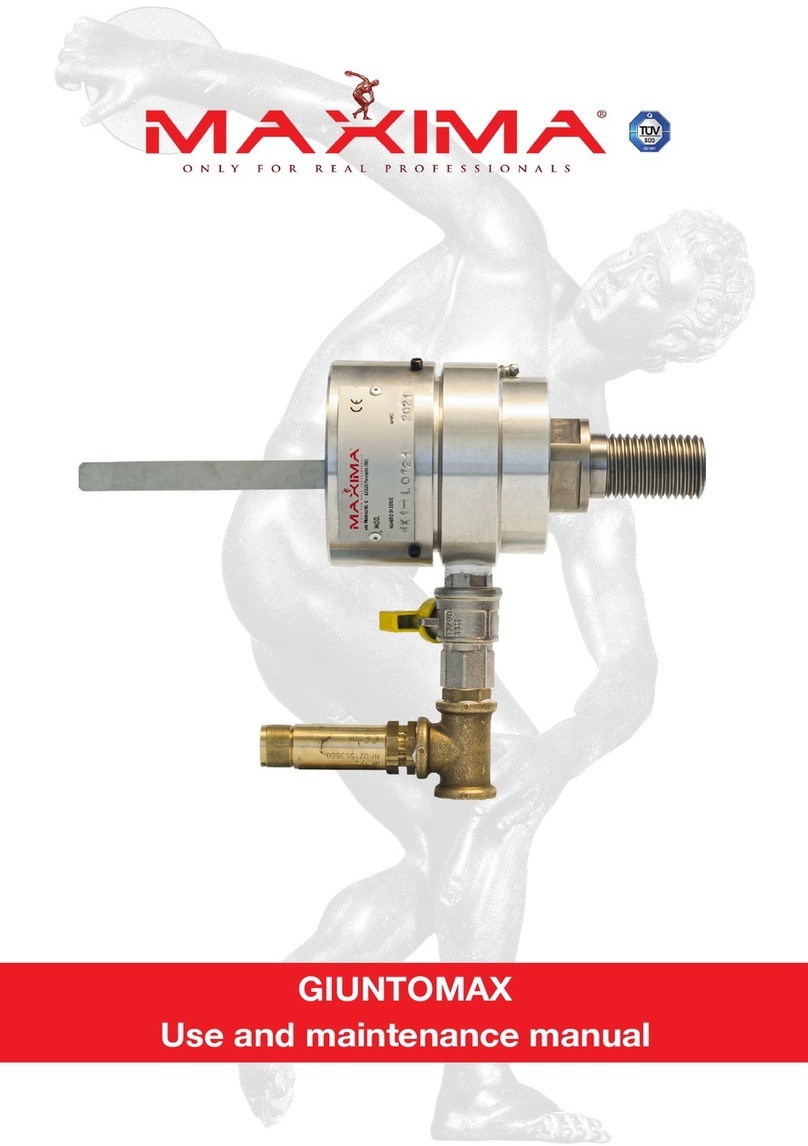
4FORM NO. L-20162-B-0601
LUBRICATION
The most effective and economical way to lubricate the
WCB Brake’s air chamber is with an air line lubricator.
Available from Nexen, the lubricator injects oil into the
pressurized air, forcing a constant oil mist into the air
chamber.
Lubricator drip rate is properly set when an oil drop
starts to form in the sight gage every time the WCB
Brake is cycled or one full drop every twenty cycles.
Locate lubricator above and within ten feet of the WCB
Brake.
For WCB Brakes that are cycled infrequently, apply two
or three drops of oil into the air inlet ports every two
weeks.
Synthetic lubricants are not recommended,
use a low viscosity petroleum base oil such
as SAE-10.
To determine the proper flow of cooling water, use the
following formula:
6.8 (HP)
GPM min = TO- T1
Where: GPM min = Minimum gallons per min required
HP = Thermal horsepower requirement
TO= Outlet water temperature
T1= Inlet water temperature
Insufficient water flow will cause the WCB
Brake to overheat, resulting in excessive
friction facing wear, loss of torque, excessive
friction surface wear and O-ring damage.
Refer to Table 2 for recommended cooling
water flow.
TABLE 2
MAX. RECOMMENDED COOLING WATER FLOW
WCB BRAKE GALLONS PER MIN. LITERS PER MIN.
WCB120 2.6 G.P.M. 10 L.P.M.
WCB130 5.3 G.P.M. 20 L.P.M.
COOLING WATER CONNECTIONS
Water inlet and outlet ports for the WCB Brake are
located in the Pressure Water Jacket and Flange Water
Jacket. To assure that the WCB Brake is filled with
water at all times the water must enter at the bottom and
discharge at the top (See Fig. 8).
NOTE: Use flexible hose for water lines and route water
lines to insure equal flow to inlet and outlet
ports. The use of rigid pipe or tubing will
prevent proper WCB Brake actuation.
Headers installed in the inlet and outlet ports
must be of a type that provide equal flow at
ports.
Water inlet temperature should be approximately 68oF.
[20oC.] or lower and controlled so that the outlet
temperature does not exceed 120oF. [50oC.] (148oF.
[65oC.] Maximum).
Use clean water free from rust, dust, or other corrosive
material.
FIGURE 8 Water Inlet
Water Outlet
